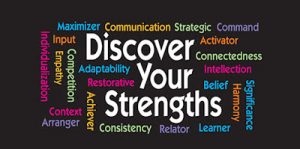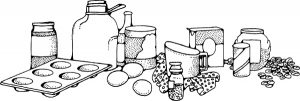
Wishing you a safe & happy New Year
From: Tri-Lakes Services, Inc.
Behavior Change
The Psychology of Behavior Change
Change can be difficult and getting stuck in the change process is common. Having a basic understanding of the mechanics of behavior change can help you overcome obstacles, especially when you are feeling frustrated by the lack of progress.
One of the most popular models for behavior change is the Transtheoretical Stages of Change framework, which was developed in the late 1970s by researchers James Prochaska and Carlo DiClemente.
https://psychcentral.com/lib/stages-of-change
They identified these six stages of change:
Not Ready: Precontemplation
In the precontemplation stage, you are not yet ready to make any changes, and do not foresee making any in the next six months. In this early stage, it is likely that you do not even see a need for change.
Getting Ready: Contemplation
As you move into the contemplation stage, you are getting ready to make some changes. You are mulling things over, weighing the pros and cons, and learning more about how a change might benefit you.
Ready: Preparation
Once you reach the preparation stage, you are ready to take action within the next three months. You still need to make some decisions about which action to take. You are telling your family, friends, and colleagues about your intentions, and you are researching possible ways to move forward.
Activated: Action
By the time you move into the action stage, you are actively engaged in making changes. You are investing your time, energy, and money into the actions you outlined in the preparation stage.
Activated For At Least Six Months: Maintenance
Once you make it into the maintenance stage, you have been taking action for at least six months.
Ceased Action: Relapse or Termination
A relapse is a short period of inconsistency, as if you pressed the pause button on action. Relapses are common throughout the behavior change process. Termination, on the other hand, is when you stop taking action permanently. Some experts believe the termination stage is the ultimate goal of all behavior change. However, it is more likely that once you reach your goal, you will continue to refine it and set new targets.
The truth is, most of us move back and forth between the stages as we move toward sustainable lifestyle changes. That is because behavior change is a process. Understanding where you are on the path to change can help you recover from relapses more easily and stay connected to your goals.
Leverage Your Character Strengths 
Do you know your character strengths? What are the traits and skills that come naturally to you? It is likely that those things are rooted in your character strengths, defined as “positive traits reflected in thoughts, feelings, and behaviors.”
The University of Pennsylvania VIA Survey of Character Strengths test was developed to help you assess these 24 character strengths:
https://www.researchgate.net/publication/258125423_Character_Strengths_and_Positive_Youth_Development
https://www.authentichappiness.sas.upenn.edu/testcenter
Wisdom
Creativity, Curiosity, Judgment, Love of Learning, and Perspective
Courage
Bravery, Honesty, Perseverance, and Zest
Humanity
Kindness, Love, and Social Intelligence
Justice
Fairness, Leadership, and Teamwork
Temperance
Forgiveness, Humility, Prudence, and Self-Regulation
Transcendence
Appreciation of Beauty and Excellence, Gratitude, Hope, Humor, and Spirituality
Your character profile is comprised of all 24 strengths, just in varying degrees. The more you operate within your strengths, using them in your day-to-day life, the more benefits you will
experience. Leveraging your strengths on a regular basis leads to less stress, higher productivity, and even greater happiness.
Here are some different ways to leverage your strengths:
Family
At home, volunteer for household tasks that are a good fit for your strengths, and offer support to other family members when you see them struggling.
Peers
At work, seek out projects that require your specific strengths, and offer help to colleagues who do not share your strengths.
Leadership
If you hold a leadership role, find ways to leverage your team’s strengths to strengthen the success of your team and organization as a whole.
Community
Within your community, look for volunteer opportunities that enable you to use and expand your strengths while also contributing to the greater good.
Finding simple ways to leverage your strengths on a daily basis can improve your overall well being.
The Secrets to Lasting Behavior Change
Do you struggle to make lasting changes when it comes to improving your wellbeing? Do you routinely fall back into old habits after doing well for a couple of weeks?
Sustainable behavior change is hard work, but there are a few strategies that can improve your chances of making changes that stick.
Try these secret ingredients to lasting behavior change:
Create exciting goals
Do you feel excited when you think about your goals? If you want to achieve your goals, they must excite you. They have to be compelling enough that you look forward to investing your
time and energy in taking action to reach them. If they do not, or if you dread working on them, they probably are not the right goals for you. Whenever you feel stuck, it might be time to consider revising or changing your goal.
Build a strong support network
Surround yourself with positive people who encourage you, and limit your exposure to those that derail your efforts. This might mean limiting the time you spend with certain people or
the activities you engage in.
Find alternatives
When you find yourself tempted to veer off the path that leads to your goals, have some alternatives ready. Create a list of possible substitutes in advance, so you have other healthy
options to choose from.
Celebrate
Do you tend to check goals off your list and move right along to the next one without acknowledging your success? Take a moment to celebrate each achievement and milestone you
reach.
Lasting behavior change requires exciting goals, a supportive network, a plan to overcome roadblocks, and taking time to celebrate your milestones and achievements.

Vegan Turmeric Pumpkin Soup
INGREDIENTS
• 1 tablespoon olive oil
• 1 medium yellow onion, chopped (approx 1 cup)
• 3 medium garlic cloves, minced
• 2 tablespoons chopped sage (approx 10 sage leaves)
• 4 cups vegetable broth
• 1 15oz can pumpkin puree
• 1 15.5oz can cannellini beans
• 1 teaspoon turmeric
• 1/2 teaspoon nutmeg
• 1 teaspoon salt
• Pepper to taste
• Optional: Pepitas for garnish
INSTRUCTIONS
1. In a 4 quart pot, heat olive oil over medium heat.
2. Add onion and cook for 5-7 minutes, or until translucent. Add garlic and sage and cook for another minute, or until fragrant.
3. Add broth, pumpkin, beans, turmeric, nutmeg and salt and stir to combine. Bring to a simmer.
4. Transfer to a high-speed blender or use an immersion blender to puree the soup. If using a high-speed blender, transfer soup back to the pot. Let cook for 5-10 more minutes on medium-low heat. Add pepper to taste.
5. Optional: Garnish soup with pepitas (pumpkin seeds).
Total Time (Cook and Prep):
20 minutes
Servings: 4
NUTRITION INFO (per serving)
Calories 208
Fat 5g
Total Carbohydrate 31g
Dietary Fiber 9g
Sugars 8g
Protein 10g
